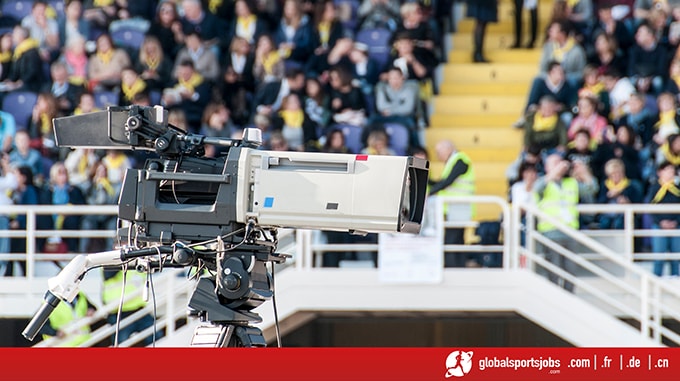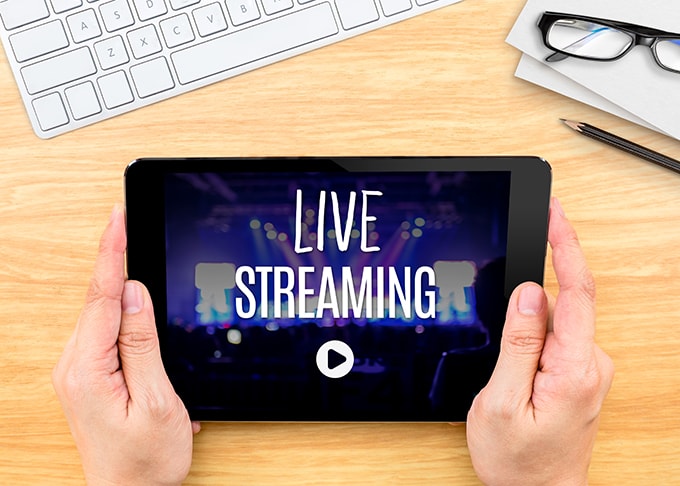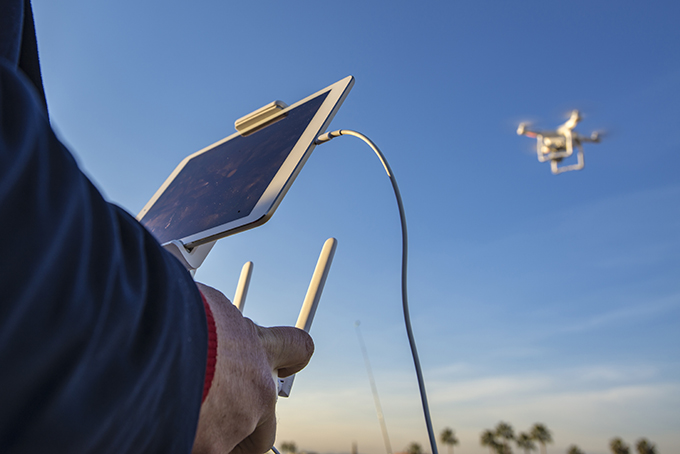Search the latest and greatest job opportunities in sport

The wind of change is blowing through sports broadcasting as we head into 2017, with live streaming and social media platforms shaking up an already congested marketplace.

1. Increased live streaming on social media
Nothing better exemplifies the shifting sands in the world of sports media than Twitter's deal to live-stream National Football League matches.
The struggling social network recently fought off competition from Facebook, Amazon, Yahoo! Inc. and Verizon to win rights to show 10 Thursday night NFL games live online for free.
Should Twitter's NFL coup prove a success – and it is seeking up to $50million in advertising from the $10million deal – 2017 could well see other social media companies looking for similar agreements to secure their futures.
Twitter COO Adam Bain said: “Connected audiences drive virality and they drive popularity. And when something happens on Twitter now in live video, that can be pushed out and shared with many others to make the audience even bigger in that ‘in-the-moment’ experience. And that’s allowed us to win a lot of these deals.”
Facebook has already streamed at least a dozen live sporting events, including USA Basketball men’s and women’s national team exhibition games, plus two competitive women's football matches and a friendly between Manchester United and Everton.
It has also paid a reported $4.4 million for athletes, European football clubs and sports media companies to create video content on Facebook Live.
Facebook CEO Mark Zuckerberg explained: “Ten years ago most of what we shared and consumed online was text. Now it’s photos and soon most of it will be video. We see a world that is video first, with video at the heart of all of our apps and services.”
Instagram has followed in the footsteps of Twitter and Facebook, after it changed its video limitation from 15 seconds to one minute. The NBA , the sports league with the most Instagram followers at 20 million, has already capitalised by posting 60-second recaps of games for the first time.
Liz King, CEO of techsytalk.com, said: “The key is to design a live-stream experience that drives interest in face-to-face attendance and to capture your event in unique ways. Think 360 video or photos, time lapse and drones. These possibilities for photo and video at events are unparalleled and will really help planners create a more awesome experience for their attendees and sponsors.”

2. Drone racing the next big broadcast sport
Until recently drones have predominantly been used in the sports broadcasting sector to improve coverage of an event – but that is all about to change in 2017.
Major broadcasters – such as Eurosport, Sky and ESPN – have all agreed contracts with the main drone-racing competitions in the hope of attracting younger audiences.
Peter Hutton , chief executive of Eurosport, who have struck an exclusive deal to distribute coverage of the DR1 Racing series in 70 European and Asia-Pacific countries , explained:
“We would like to engage with a younger demographic and have been pushing shortform video, social media and digital content in an effort to do so. Drone racing is really an extension of that. It is an experiment."
Eurosport will be using the coverage of esports and Formula One as the model to follow, with additional video content and interviews with some of the sport's top racers.
Meanwhile, the Drone Sports Association has agreed a deal with ESPN and Sky has invested $1million to show the Drone Racing League on its free-to-air Sky Sports Mix channel.
To date, drone racing has built its audience chiefly via internet streaming, but the plan is to eventually broadcast events live.
Brad Foxhoven, founder of DR1 Racing, said: “There are openings for formats and in these early stages it is important that whoever has the stage does a good job of presenting the sport. I don’t think live coverage on television is far away and there is a high likelihood we could be looking at doing that in a year’s time.”
If Eurosport's, Sky's and ESPN's experiments prove successful, other broadcasters are sure to start pursuing deals with drone-racing organisers in 2017.

3. Reduction in TV subscriptions as OTT takes off
With internet-based streaming services or over-the-top (OTT) television now becoming more readily available, consumers are less likely to splash out large TV subscriptions for channels they don't generally watch - and expect that trend to increase in 2017.
The general public would rather opt for a service that can be accessed at home or on the move, rather than a strict programming schedule peppered with repeats that is provided by the traditional broadcasters.
This is evident from the massive growth in users at both Netflix and Amazon, who have mushroomed from a predominantly DVD subscription service and online bookstore respectively into one of the world’s largest video distribution networks and many people’s favourite digital retailer, with Amazon also adding original programming and extensive mobile capabilities to their portfolio.
In November Netflix followed Amazon in introducing an option to download videos on to mobile devices instead of streaming them over cellular data, thereby allowing users to avoid eating into their monthly data allowances – a huge issue with mobile video.
The same month, American multinational telecommunications company AT&T launched a television service that can be streamed on mobile devices, again without that usage counting towards their data allowances and with the added benefit of an extensive list of channels costing much less than most TV cable and satellite subscriptions.
Perform have now copied that model for sport by launching DAZN , a live-streaming service where subscribers will have to pay a monthly fee of around £10 to gain “unlimited access to watch the widest array of live and on-demand sport on virtually any connected device”.
It also promises “every goal from every game across the top five European leagues” and action from major boxing, rugby, darts and motorsports events, plus live broadcasts from the main US sports leagues.
DAZN is currently only available in Germany, Switzerland, Austria and Japan, but it surely won’t be long before it is accessible in other parts of the globe. Then watch other companies latch on to the idea.

4. VR and AR to move into TV
Television needs a new trend to stem the flow of viewers to the internet - and it could come in 2017 with the introduction of Virtual Reality (VR) and Augmented Reality (AR), where participation can be part of the viewing experience.
Fox Sports has already streamed Nascar, horse-racing, the NBA and US Open golf in VR, but it is AR – where graphics are overlaid onto a live streamed view – that will be the next major step.
“AR and VR is still in its infancy, but AR has great potential to be able to help viewers understand complex rules and action by allowing explanatory commentary from pundits or animations to pop-up over the live stream,” says Carlo De Marchis , chief product and marketing officer at Deltatre.
Television would need to improve on its current HD and 3D platforms to cope with VR and AR, but 4K Ultra HD cannot be far away, with 75% of US households now owning at least one HDTV and with NHK having already transmitted 8K TV signals via a single UHF terrestrial channel. Indeed, the Japanese broadcaster plans to use 8K Ultra HD at the 2020 Tokyo Olympics.
Then you would have 360-degree live TV with amazing audio and two-dimensional video, with holographic images – three-dimensional and free-standing – the next step.

5. TV advertising to be more precise
With television channels set to lose subscribers in 2017, they need to increase their funding as well as their creativity and that could well come from targeted advertising.
They will already have subscribers' contact details on file and now, thanks to improved data-gathering systems, they are able to find out more about their interests and product purchasing history.
NBCUniversal has shown the way with its audience targeting platform, which combines viewer data gained from set-top boxes with third-party information about consumers' behaviour.
The next stage therefore is to include advertisements in live coverage of an event, for example, which are specifically targeted at a particular group of viewers.
UEFA has already trialled embedding watermarks in the audio of its coverage, which allows rights-holders to experiment with marketing strategies on second screens, or a sponsor to promote a product.
“A Lionel Messi goal would be watermarked, linking the match action to a series of relevant additional content available on the viewer’s second screen,” UEFA digital media manager Olivier Gaches says. “More information about the player or an opportunity to view his previous Champions League goals, or an adidas e-commerce promotion, could be a call to action.”
As Deloitte recently confirmed, businesses still regard TV advertising as the best way to sell a product.
This article was written by the GlobalSportsJobs insight team.
Give your career in sport a boost with the latest live vacancies in Media, Technology & Broadcast , or create an account today and stay up to date with all the latest industry knowledge, events and jobs in sport.
Search the latest and greatest job opportunities in sport